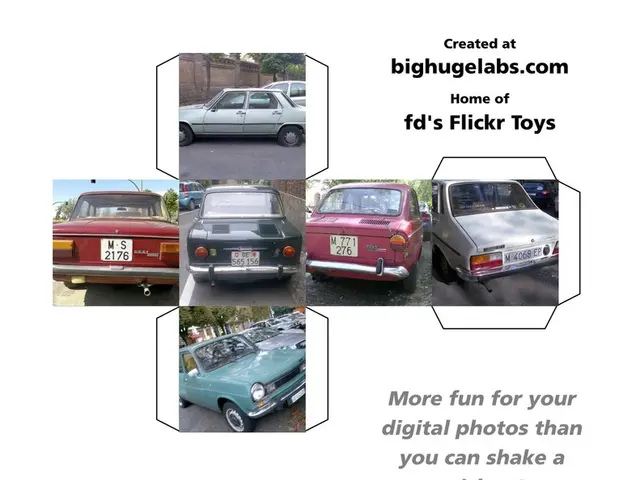Closing the Chasm: Electric Cars and Combustion Engines Approach Price Parity
Difference in Costs Between Electric Vehicles and Fossil Fuel Cars Hits All-Time Low - Reduced Difference in Cost Between Electric Cars and Fossil Fuel Vehicles Now Narrow
In an intriguing study, the price gap between the top 20 best-selling combustion engine and electric models has hit a record low.
Leading analyst, Ferdinand Dudenhoffer, points to the substantial hike in discounts on new electric vehicles as the primary reason for this historic shift. In May, a cool 17.4% average discount was granted on electric rides - a record-breaking figure since tracking discounts started.
Electric vehicles stole the spotlight, boasting an average transaction price of €36,519 in May. This decline, experts note, is partially due to Tesla's Model 3 being replaced in the comparison by more significant players - offerings from Kia, Volvo, Toyota, and Ford took center stage. It's the automotive heavyweights, not just Tesla, that are propelling the electrification movement.
Factors Driving the Price Narrowing
Several factors are responsible for the shrinking price divide between combustion engines and electric vehicles.
- Battery Pricing Drop: The decreasing cost of batteries, a key component of electric vehicles, is a significant factor leading to the reduced battery cost. This price cut allows manufacturers to lower the overall price of electric vehicles, making them contenders against combustion engine vehicles.
- Heightened Competition: Chinese manufacturers, in particular, are thriving in their fiercely competitive market, effectively passing on the savings from reduced battery costs to consumers.
- Government Incentives: Various governments offer grants and tax breaks to promote electric car purchases. For instance, in the UK, electric car salary sacrifice schemes can save consumers up to 50% on new electric vehicle prices.
- Market Expansion: The electric vehicle market is blossoming, with a growing selection of affordable models joining the fray. New entrants such as the Citroën Ami and the Dacia Spring are helping to lower the average price of electric cars.
Discounts on Electric Vehicles
The extent of discounts on new electric vehicles differs by region and country. In the UK, for example, schemes like electric car salary sacrifice can slash monthly payments to as little as £128 for cars like the Dacia Spring. However, the magnitude of these discounts can fluctuate significantly based on local market situations and government policies. While electric cars are typically more expensive out of the gate than conventional gasoline cars, the combination of government incentives, lower running costs, and discounts can translate to long-term savings [4].
The price disparity is narrowing considerably in China thanks to the competitive market and tumbling battery costs, making electric cars nearly equal in price to gasoline cars in certain segments. However, outside of China, the divide persists, with few electric models priced under $25,000 in regions like Europe and the U.S. [5]
- The economic and social cohesion of EC countries could benefit significantly from the ongoing price parity between electric cars and combustion engines, as the gap between their costs has hit a record low.
- The economic and social cohesion of various industries, including finance, transportation, and technology, would be positively impacted by the increased affordability of electric vehicles due to factors such as battery pricing drop, heightened competition, government incentives, and market expansion.
- Social cohesion across EC countries could be improved by the increasing availability of affordable electric vehicles, as they become more accessible to a wider range of consumers due to lower prices and discounts, ultimately reducing reliance on fossil fuels and promoting environmentally friendly transportation.








